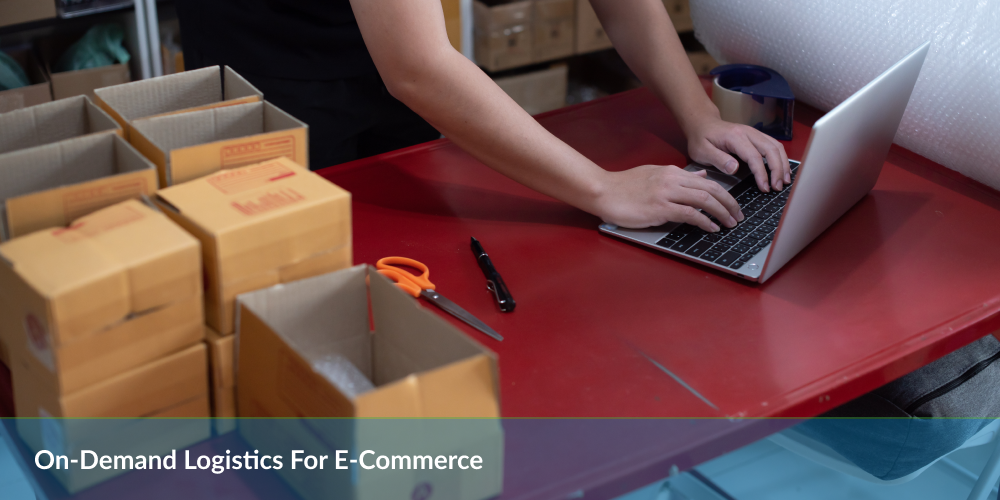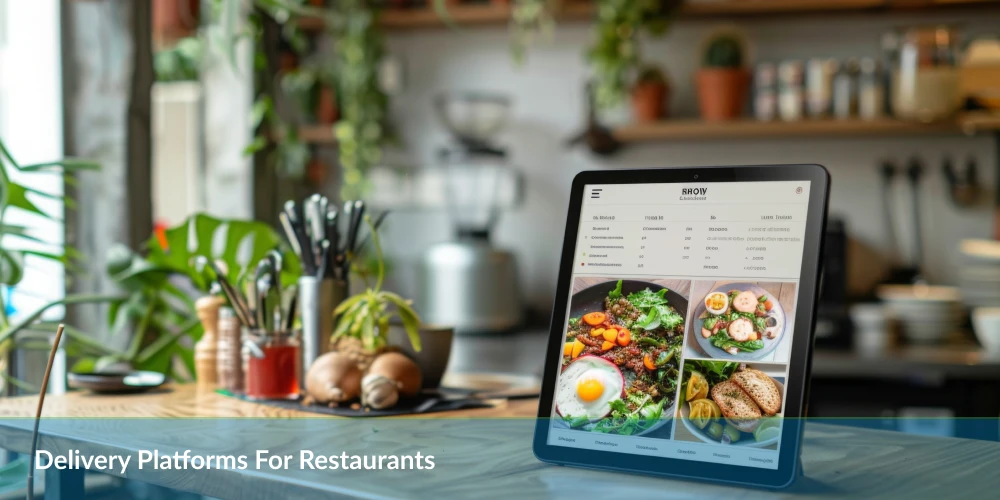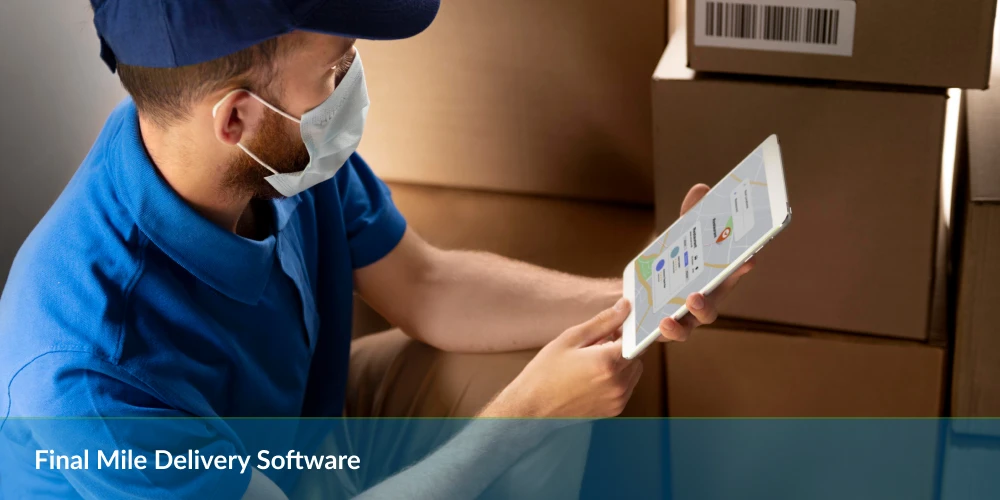Table of Contents
What if you could get your online order delivered in hours instead of days? On-demand logistics for e-commerce is making that a reality. This transformative model is shifting away from traditional logistics systems, which often struggle to keep up with the growing demand for quick, reliable delivery. By embracing advanced technology and optimized networks, on-demand logistics enables businesses to fulfill orders rapidly, aligning with the modern consumer’s expectation for instant gratification.
Leveraging real-time tracking, route optimization, and dynamic scheduling, on-demand logistics ensures goods are delivered where and when customers need them. This system adapts to the ever-evolving needs of e-commerce, allowing businesses to provide fast, efficient delivery solutions. This approach drastically reduces the time between purchase and possession, giving consumers the convenience they crave.
As the demand for speed and convenience grows, on-demand logistics for e-commerce answers the call, eliminating the delays that once plagued traditional delivery systems. The days of waiting for long delivery windows are over, as on-demand logistics redefines the customer experience with near-instant fulfillment. Thus, it is an essential strategy for businesses looking to stay competitive in today’s e-commerce landscape.
The Impact of E-commerce Growth on Logistics Demands
E-commerce has been on a relentless ascent. According to Statista of 2024, the estimated number of internet users worldwide was 5.5 billion, up from 5.3 billion the previous year. This number represents 68 percent of the global population.
Analyzing E-commerce Growth Trends
Year over year, digital storefronts continue to multiply, backed by increasing consumer reliance on online platforms for daily necessities, luxury items, and services. Convenience trumps traditional purchasing avenues. Buyers expect a seamless experience from click to delivery, and as e-commerce prospers, so does the demand for sophisticated logistics solutions.
Correlation Between E-commerce Expansion and Increased Logistics Demand
Peel back the layers of e-commerce success, and you find logistics pulsing at its core. Consider how high consumer expectations have risen: today, two-day shipping is often deemed slow, with many preferring next-day or same-day delivery. As more online transactions occur, the need for swift and reliable parcel delivery services spikes. Moreover, increased sales volume necessitates larger storage spaces, more intricate inventory management, and faster order processing capabilities.
Enhancing Service Quality through On-Demand Delivery Apps
With the advent of on-demand delivery applications, e-commerce businesses witness a transformative capability to fulfill consumer demands swiftly. These platforms are adept at providing users with real-time tracking features, thus delivering transparency and improving trust in the service. Deploying real-time delivery options caters to the immediacy of customer expectations and elevates the shopping experience.
Overview of on-demand delivery applications
On-demand delivery applications constitute a digital bridge between merchants and customers, facilitating the instantaneous dispatch and tracking of goods. Advanced algorithms within these apps optimize delivery routes, thus reducing transit times. Customers benefit from the flexibility to schedule deliveries at their convenience, which, in turn, enhances customer satisfaction.
Improving customer service with real-time delivery options
Real-time delivery options have revolutionized customer service by giving users minute-to-minute updates on their orders. Not only does this feature allow customers to plan their schedules around the delivery, but it also minimizes the uncertainty and anxiety associated with waiting for online purchases. Additionally, these applications empower customers with the option to communicate with the delivery personnel, effectively personalizing the delivery process.
Integrating apps with existing e-commerce platforms for seamless operations
Integration of on-demand delivery apps with existing e-commerce platforms streamlines operations and enriches the user experience. By synchronizing data across platforms, e-commerce businesses achieve seamless order management. This integration allows for automatic updates on inventory levels, order confirmation, and delivery status, conserving valuable resources and reducing the margin for error in the logistics process.
- By reducing operational friction, e-commerce companies can more readily scale their offerings to meet the growing marketplace demands.
- Furthermore, these integrative solutions pave the way for enhanced data collection, enabling businesses to gain insights into consumer behaviors and preferences.
Pro Tip: Integrating on-demand delivery apps with your e-commerce platform streamlines operations and enhances customer satisfaction by providing real-time updates and personalized service.
Innovation in Transport and Fulfillment for E-commerce
Warehousing strategies and inventory management play a decisive role in e-commerce success. Warehouse operations directly influence how rapidly a product moves from a storage shelf to the customer’s front door. To streamline their warehousing, e-commerce businesses increasingly adopt adaptable warehousing solutions that cater specifically to the online purchasing environment. These solutions accommodate a wide range of products and ensure that businesses can move goods in a manner that aligns with fluctuating consumer demands, seasonal trends, and promotional peaks.
E-commerce entities leverage various strategies for effective inventory management. Accurate forecasting, demand planning, and dynamic reordering reduce stockouts and minimize surplus. Automated inventory systems apply complex algorithms to determine optimal stock levels, translating into prompt order fulfillment and maximized customer satisfaction.
The incorporation of real-time tracking technology has revolutionized transport efficiency in on-demand logistics. Customers and businesses now track orders throughout their journey with unprecedented precision. This access to real-time data enhances the customer experience through transparent communication and allows logistics teams to respond proactively to transport delays and optimize route planning.
Navigating Last-Mile Delivery Challenges
Several obstacles consistently surface in last-mile delivery for e-commerce businesses. Traffic congestion, inaccurate delivery addresses, and delays attributable to weather or unforeseen circumstances frequently disrupt the efficiency of last-mile logistics. Additionally, customer availability for receiving deliveries poses a significant challenge, and heightened expectations for rapid delivery further complicate operations.
Cost Analysis and Cost-efficient Strategies for Last-Mile Logistics
Last-mile delivery represents a substantial portion of total logistics costs. Optimizing routes and delivery schedules leads to fuel and time savings. Investing in automation for sorting and packaging accelerates processes and reduces labor expenses. Collaboration with third-party logistics providers can offer scalability and flexibility without the capital expenditure required for in-house fleet expansion or warehousing. Notably, analyzing delivery patterns and customer preferences enables e-commerce businesses to stock items closer to high-demand areas, curbing last-mile delivery costs significantly.
Embracing Same-Day Delivery Services to Meet Customer Demand
At the forefront of e-commerce innovation, companies integrating same-day delivery services are not just responding to consumer preferences but reshaping them. E-commerce customers increasingly expect the immediate gratification of same-day delivery as a standard service offering, propelling it from a premium service to a competitive necessity.
The Rising Demand for Same-Day Delivery from E-commerce Customers
Retail giants have set a precedent for rapid delivery, resulting in a market where customers demand swift, reliable, and efficient shipping options. A significant portion of e-commerce consumers now prefer same-day delivery, linking delivery performance directly to their overall shopping satisfaction and likelihood to reorder.
Steps to Implement Same-Day Delivery in Your Logistics Strategy
To commence same-day delivery, begin by assessing the scalability of your logistics operations. This involves evaluating inventory management, optimizing warehouse processes, and establishing local distribution centers to mitigate the distance to the end customer. Collaboration with competent courier services that provide flexible and quick delivery options is essential. Additionally, integrating state-of-the-art technology for route optimization and real-time tracking streamlines operations to cope with the immediacies of same-day delivery.
Analyzing the Potential Return on Investment (ROI) for Same-Day Delivery Services
Implementing same-day delivery requires upfront investment in logistics infrastructure and technology, and the ROI materializes through increased customer loyalty and expanded market share. Online retailers often witness a surge in conversions and a reduction in cart abandonment rates when offering expedited shipping options. Addressing the demand for instant fulfillment drives revenue and establishes a brand’s reputation for efficiency and responsiveness—a critical differentiator in the ever-competitive e-commerce landscape.
Harnessing the Power of Integration: Logistics Meets E-commerce Platforms
The seamless logistics integration with e-commerce platforms streamlines operations, creating a more efficient fulfillment system. This synergy enables businesses to handle increased order volumes, manage inventory effectively, and deliver faster customer delivery. To capitalize on the benefits, specific best practices have been established.
Best Practices for Logistics and E-commerce Platform Integration
Merging logistics with e-commerce platforms entails a structured approach that ensures smooth data flow and operational harmony. An exemplary integration involves automating data exchange between the e-commerce system and a Warehouse Management System (WMS). Synchronization of order management ensures that once an order is placed online, the WMS immediately processes the request for picking and packing. This cuts down processing time and reduces the likelihood of errors.
Leveraging Data Analytics for Optimized Logistics Processes
Advanced data analytics is critical in forecasting demand, inventory management, and route optimization. E-commerce platforms can predict trends and prepare inventory by analyzing purchase patterns and delivery data. Route optimization algorithms, meanwhile, analyze numerous variables to determine the most efficient delivery routes, reducing both time and costs.
Regulatory Challenges and Compliance in On-Demand E-commerce Logistics
Navigating the regulatory landscape for on-demand logistics services requires a comprehensive understanding of various legal requirements. As businesses expand their e-commerce operations, they must adhere to various international and local transport regulations. These can include safety standards, customs duties, and environmental regulations, to name a few. Staying within the confines of these rules ensures seamless operations and avoids costly penalties.
Understanding the Regulatory Landscape for On-Demand Logistics Services
Regulations in the logistics industry can fluctuate dramatically from one jurisdiction to another. Factors such as product types, transport modes, and route specifics necessitate operators to be agile in their compliance strategies. For instance, the transport of hazardous materials is subject to stringent regulations that dictate not just the handling but also the reporting and emergency response protocols. Businesses risk operational interruptions and legal infractions without a vigorous regulatory compliance structure.
Staying Compliant with International and Local Transport Regulations
Compliance is not a one-time effort but a constant endeavor that adapts to evolving laws and industry standards. Companies offering on-demand logistics services must track changes in international treaties and shifts in local transport policies. Understanding these regulations helps streamline cross-border shipments and ensure cargo is shipped without delays. Additionally, companies must ensure that their vehicles comply with emissions, highway regulations, and safety standards to maintain operating licenses.
The Importance of Partnership with Reputed Third-Party Logistics Providers (3PLs)
Establishing partnerships with experienced third-party logistics providers can greatly assist in smoothing out regulatory hurdles. These 3PLs bring expert knowledge of the logistics landscape to the table, capable of managing the labyrinth of paperwork and licensing required in various regions. They maintain compliance in tax obligations, labor laws, and international trade agreements, which can alleviate pressure from e-commerce entities looking to expand their reach without being bogged down by regulatory constraints.
Pro Tip: Partnering with experienced 3PLs ensures seamless compliance with evolving logistics regulations, reducing legal risks and operational delays.
Sustainable and Secure Delivery Models
As e-commerce entities strive to meet delivery expectations, adopting eco-friendly practices is requisite for sustainable growth. On-demand logistics services now integrate green solutions, effectively reducing carbon footprints. Initiatives such as utilizing electric vehicles, optimizing delivery routes to minimize fuel consumption, and leveraging alternative energy sources have transformative potential for the environment.
Parallel to sustainability, securing packages during transit maintains customer trust. Advanced sealing methods, theft-resistant containers, and real-time tracking systems ensure that items reach their destination intact. Safeguarding goods requires continuous innovation in packaging and monitoring technologies.
Addressing the inevitability of returns and exchanges in e-commerce, reverse logistics has ascended in prominence. Efficient strategies that support easy send-back processes, restocking, and waste reduction contribute to a circular economy. This approach heightens consumer satisfaction and fosters economic resilience by rerouting returned goods elegantly into the supply chain.
The Technological Vanguard: AI, Machine Learning, and Advanced Analytics
On-demand logistics for e-commerce are transformed by artificial intelligence (AI) and machine learning, pushing the boundaries of efficiency and precision. These technologies learn from vast amounts of logistics data, optimizing delivery routes, predicting maintenance needs, and streamlining warehouse operations. Their adoption translates to faster deliveries and reduced operational costs, reshaping the expectations of both businesses and consumers.
Machine learning algorithms become more adept at pattern recognition with each dataset encountered. In the context of on-demand logistics, this means nearly real-time adjustments to distribution plans based on changing traffic patterns, weather disruptions, or sudden shifts in demand.
Data analytics harness historical and current data to forecast e-commerce logistics trends, such as peak shopping times or popular product categories. This insight allows companies to allocate resources more effectively and to maintain inventory levels that match consumer demands without overstocking, thus minimizing waste.
Advanced analytics tools are instrumental in helping logistics companies understand market dynamics. With detailed analysis, businesses can perform predictive demand planning, ensuring the right products are at the right place when needed. As a result, companies not only meet consumer expectations but also do so in a cost-effective manner that supports sustainable growth.
- AI streamlines logistical processes, increasing speed and reducing errors.
- Machine learning adapts to new information, allowing companies to respond proactively.
- Data analytics offers insights to predict and plan for future market demands.
Cross-border Challenges in On-demand E-commerce Logistics
As e-commerce businesses expand their reach globally, the complexity of managing logistics across borders intensifies. On-demand logistics efficiently coordinates goods’ movement but confronts regulatory, cultural, and operational hurdles when crossing international lines. Each country’s customs and import regulations form an intricate web that requires careful navigation to ensure timely delivery.
Shipping costs can significantly impact the bottom line due to variables such as tariffs, taxes, and varying fuel charges. Enterprises must, therefore, balance the effectiveness of on-demand services with cost efficiency. Achieving this balance often necessitates a deep understanding of international logistics and partnerships with local carriers to optimize shipping routes and costs.
Adopting the latest technologies in logistics management can further alleviate the complexities of cross-border trade. Artificial intelligence and machine learning predict and manage potential obstacles in the logistics network, improving the responsiveness of on-demand delivery systems globally.
Pro Tip: Leveraging regional distribution centers and AI-driven logistics solutions minimizes cross-border delays and optimizes cost efficiency in on-demand e-commerce.
Key Takeaways
E-commerce Growth Fuels Logistics Demand: As global online sales continue to surge, businesses must adapt their logistics operations to meet rising customer expectations for faster, more reliable deliveries.
On-Demand Delivery Apps Enhance Customer Experience: Real-time tracking and flexible delivery options through on-demand apps have revolutionized customer service by providing transparency, personalization, and convenience.
Same-Day Delivery is Becoming a Necessity: Consumers increasingly expect same-day delivery, making it a competitive requirement for e-commerce businesses to implement agile logistics systems and partnerships with local couriers.
Integrating Logistics with E-commerce Platforms Boosts Efficiency: Seamless integration of logistics systems with e-commerce platforms enables smoother operations, optimized inventory management, and faster fulfillment, contributing to business scalability.
Technology and Data Analytics Drive Logistics Optimization: AI, machine learning, and data analytics help businesses predict demand, optimize routes, and streamline warehousing, leading to cost savings and faster delivery times.
Wrapping It Up!
The future of e-commerce is unmistakable as on-demand logistics for e-commerce become increasingly essential for seamless and efficient delivery services. Companies that harness these solutions see transformative benefits in delivery speed, customer satisfaction, and scalability. On-demand logistics serves as more than just a facility; it acts as a competitor’s edge in the relentless tides of e-commerce.
By adopting on-demand logistics, your e-commerce business can position itself at the forefront of innovation and customer-centric services. You will not only be responding to market demands but anticipating the shifts and staking your claim on the future of retail. The evolution of logistics is inextricable from the growth of e-commerce – understand this, and your business does more than adapt; it thrives.
Take a moment to consider your current logistics framework. Does it match the speed and efficiency on-demand logistics offers? Are you providing a seamless experience that fosters customer loyalty? If uncertainties arise, may the time be ripe for a momentous shift? Action steps range from fine-tuning your supply chain to adopting fully integrated on-demand solutions.
Optimize Your On-Demand Logistics for E-Commerce with NetworkON!
Stay ahead in the fast-paced e-commerce landscape with NetworkON’s cutting-edge on-demand logistics solutions. Enhance delivery speed, optimize routes, and provide seamless customer experiences with real-time tracking and automation.
Faster deliveries. Greater efficiency. Higher customer satisfaction.
Frequently Asked Questions
What is on-demand logistics, and how does it benefit e-commerce businesses?
On-demand logistics refers to a dynamic delivery model that allows e-commerce businesses to fulfill customer orders in real time or within a very short timeframe. It benefits businesses by improving delivery speed, enhancing customer satisfaction, and offering flexibility, such as same-day or next-day delivery options, which align with modern consumer expectations.
How can on-demand logistics help reduce last-mile delivery challenges?
On-demand logistics utilizes route optimization software, real-time tracking, and local distribution centers to reduce delays in last-mile delivery. It allows for efficient delivery routing, personalized delivery windows, and real-time updates, ultimately improving delivery speed and reducing failed delivery attempts.
What are the key technologies driving on-demand logistics in e-commerce?
Key technologies include AI, machine learning, and data analytics. These technologies optimize delivery routes, predict demand trends, and manage inventory effectively. They also improve operational efficiency by allowing businesses to adjust logistics processes in real time based on changing conditions like traffic or weather disruptions.
What are the cost implications of implementing same-day delivery services?
While same-day delivery requires investment in infrastructure, such as local distribution centers and advanced logistics technology, it can offer significant ROI through increased customer loyalty, higher conversion rates, and reduced cart abandonment. Businesses can also lower long-term costs by optimizing delivery routes and reducing stockouts through better demand forecasting.





0 Conversations